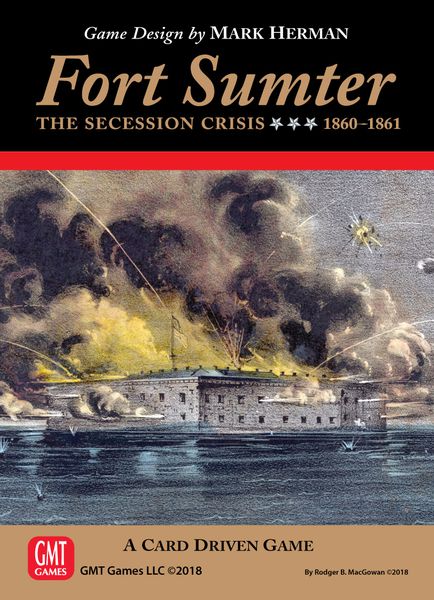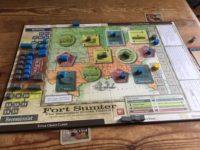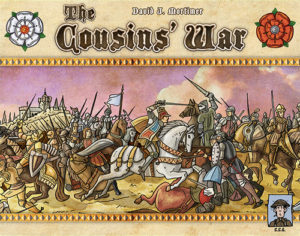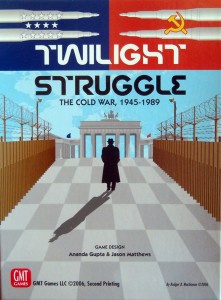- Learning time
- 30 minutes
- First play time
- 40 minutes
Fort Sumter
Designed by: Mark Herman
Fort Sumter is from GMT, the go-to company for involved, historically-themed games such as Cuba Libre (Cuban revolution!) Twilight Struggle (the Cold War!) or Time of Crisis (the Roman Empire!). They tend to be exhaustively researched and thoughtful games, but whereas Fort Sumter is also inspired by history, concerning the onset of the American Civil war, this is a two-player game you can blast out in half an hour or less.
The game has a smallish board and two decks of cards – Strategy and Objective. On the board are four crisis dimensions representing the frontiers of the fight over secession: political opinion, public opinion, armorment and secession states. Each dimension is represented by three areas of control, and in each dimension one area – with a white outline – is pivotal.
In each round you are dealt four strategy cards and two objective cards. You place one strategy card face down for the Final Crisis (we’ll come to that shortly) and choose which objective to go for – the objectives are very simple and usually just about ending the current round in control of a particular area. You control an area when you have more of your cubes in it, and the three strategy cards are played in turn, activating either the event on the card (the text) or the value (the number top-left, as long as it matches your colour!), which allows you to add cubes to the board. The event will also involve the adding, moving, or removing of cubes. And the first two or three rounds of the game are just a tactical back-and-forth as players wrestle for control – controlling a pivotal area allows you to shuffle some cubes around before scoring, and controlling every area in a dimension scores you… a point!
Meeting your objective also scores you a point. As soon as the Final Crisis is triggered – see Brain Burn below – players play the cards they put aside earlier, flipping them over and only referencing the bottom of the card. Players reveal these cards simultaneously, and if the revealed dimensions are the same they must both remove their own cubes – either one from the matching dimension, or two from other dimensions. If the revealed dimensions are distinct from each other, both players may add cubes to the board.
After a final scoring round, the player with the most points wins. Fear not if the above seems complicated; we’ve almost explained every rule now!
The guru's verdict
-
Take That!
Take That!
The entire game is a jostling for position, so yes.
-
Fidget Factor!
Fidget Factor!
Not much at all - maybe a little on a first play, but after that Fort Sumter should be played pretty speedily.
-
Brain Burn!
Brain Burn!
The objective is to control those dimensions and try and ensure your opponent doesn't. Only controlling one is fine as long as the opposition has none! But other factors to figure in are how the growing tension of the game is represented by your running out of cubes - they're removed from a track and at certain points (called breaches) little things are triggered - extra cubes for yourself, a peace commissioner (who protects an area from being tampered with whilst present, but is removed before the final crisis) and the final crisis itself.
-
Again Again!
Again Again!
The simple back-and-to of the fight for majority is a pretty well-worn gaming trope, but it's neatly done here with the extra elements of the breaching and the final crisis marking Fort Sumter out.













Sam says
I didn't expect Fort Sumter to be a huge hit if I'm honest - somewhat abstracted games of push/pull where cubes represent political clout have previously left me rather cold (excepting the brilliant Twilight Struggle) as I don't feel the theme coming through. And to be frank I'd say that I do have the same experience with Fort Sumter. The history is interesting of course (and GMT always include a lot of background info with their games), but I don't feel that story in the playing of the game. It's intriguing nonetheless - not just in the reactive tit-for-tat of the cardplay over the first 2 or 3 rounds, but how that Final Crisis plays out, and whether the cards you've laid aside are going to be as impactful as you'd like. For me, it's too abstract really, but if you like this kind of thing I can see how repeat plays would reward.